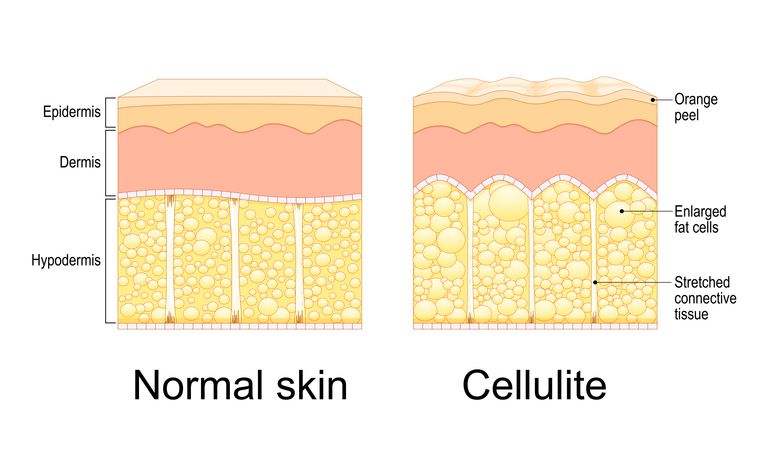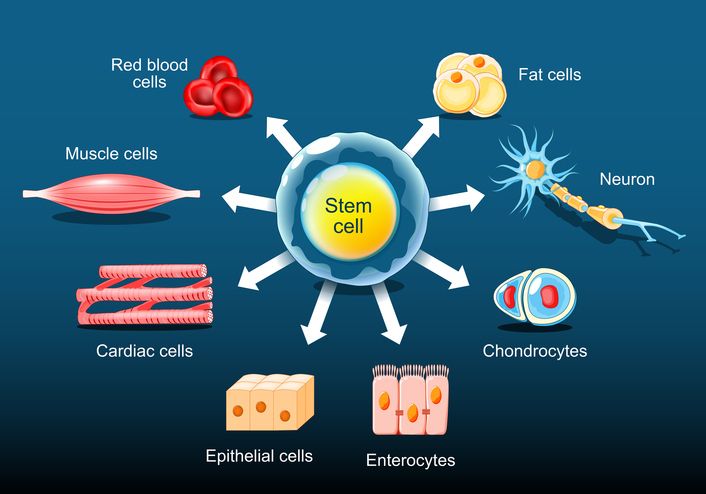
Author: Natalie Ng|Updated: 21 May 2025
If you're trying to lose weight without giving up satisfying meals, vegetables are a smart place to start. Packed with nutrients but low in calories, they fill you up without adding too much to your daily intake. In fact, adding the right vegetables to your routine can help you eat fewer calories overall, support your weight loss journey, and even help your body burn fat more efficiently. Certain veggies offer more than just energy control. Many are rich in fiber, which helps curb hunger, and some provide beneficial plant compounds that support a healthy gut, blood pressure, and bone health. Others, like cruciferous vegetables, support your metabolism and may help with belly fat. Including more fiber-rich, low-calorie vegetables in your diet can also reduce your intake of high-calorie or fatty foods, especially when they take the place of starchy vegetables or refined grains. This article breaks down eight vegetables that are low in calories but high in benefits—easy to add to any healthy diet and perfect for anyone trying to manage their weight in a sustainable way. Whether you’re meal prepping, making a stir fry, or trying to eat more vegetables without turning to canned fruits or added sugar, these choices fit well into a healthy lifestyle.

Broccoli for Weight Loss: Low in Calories, High in Fiber

Importance of broccoli in a healthy diet
Broccoli supports healthy weight loss because it contains very few calories while providing a high amount of fiber. One cup of cooked broccoli has about 31 calories and 2.4 grams of fiber. This combination helps you eat fewer calories without feeling hungry. The fiber slows digestion, which helps control appetite throughout the day.
Broccoli is a cruciferous vegetable. These vegetables may help the body burn fat more efficiently. They also support gut health and help manage blood sugar, which is important during any weight loss effort. Choosing low calorie vegetables like broccoli can reduce the need for fatty foods or snacks with added sugar.
Ways to include broccoli in your meals
Try to eat one to two cups of broccoli daily. It can be steamed, roasted, or eaten raw. Broccoli pairs well with lean protein such as grilled chicken, tofu, or fish. Add it to a stir fry or enjoy it as a side dish with garlic powder or lemon juice for extra flavor.
Broccoli also fits well with high fiber foods like brown rice or other non starchy vegetables. This helps support a healthy gut and makes it easier to manage your calorie intake. Broccoli is a simple and effective choice for anyone looking to promote weight loss while keeping meals satisfying.

Cauliflower for Weight Loss: Low Calorie and Easy to Cook

Importance of cauliflower for weight management
Cauliflower is one of the most useful vegetables if you want to lose weight. It contains very few calories—only 25 per cup—and offers helpful nutrients like vitamin C and fiber. The low calorie count makes it easy to eat more volume without going over your daily calorie intake. This helps support healthy weight loss without feeling restricted.
It also fits into a healthy diet because it can replace higher calorie foods like rice, mashed potatoes, and pizza bases. Using cauliflower in place of starchy vegetables or refined grains lowers energy density while keeping meals filling and satisfying. It helps curb hunger and supports weight loss goals in a way that feels natural.
Nutritional value of cauliflower
Cauliflower provides a mix of nutrients that support overall health and weight loss efforts. One cup of raw cauliflower offers:
• 25 calories
• 2.1 grams of fiber (8% of daily value)
• 51.6 mg of vitamin C (57% of daily value)
• 2 grams of protein
This cruciferous vegetable is also high in antioxidants, which support your immune system and may help reduce inflammation. These benefits are helpful when working on long-term weight management and healthy eating habits.
Cooking methods to keep meals low in calories
To get the most from cauliflower, choose cooking methods that avoid added saturated fat or too much oil. Try these options:
• Pulse cauliflower florets in a food processor to make a rice alternative
• Roast at 425°F with a small amount of olive oil and seasoning
• Steam and blend for a creamy mash with garlic and plain Greek yogurt
• Air fry at 375°F with spices for a crispy snack
These methods support a healthy diet without increasing your calorie intake too much. Cauliflower’s mild taste makes it easy to use in many recipes.
Simple cauliflower-based meal ideas
Cauliflower is easy to use in everyday meals. Here are four examples:
• Cauliflower rice: pulse raw florets, sauté with garlic and olive oil (10 min)
• Mashed cauliflower: steam until soft, blend with herbs and butter (15 min)
• Cauliflower pizza base: combine cooked cauliflower, egg, and cheese, then bake (25 min)
• Buffalo cauliflower bites: coat with hot sauce and bake or air fry (20 min)
These recipes help you eat fewer calories while enjoying meals that are filling and flavorful. They also support your weight loss journey by reducing the need for fatty foods or added sugar.
Book Now to Experience
S6 Body Sculpting Treatment
1 Minute Self-Registration
Date should not be before minimal date

Leafy Greens for Weight Loss: Spinach, Kale, and Swiss Chard
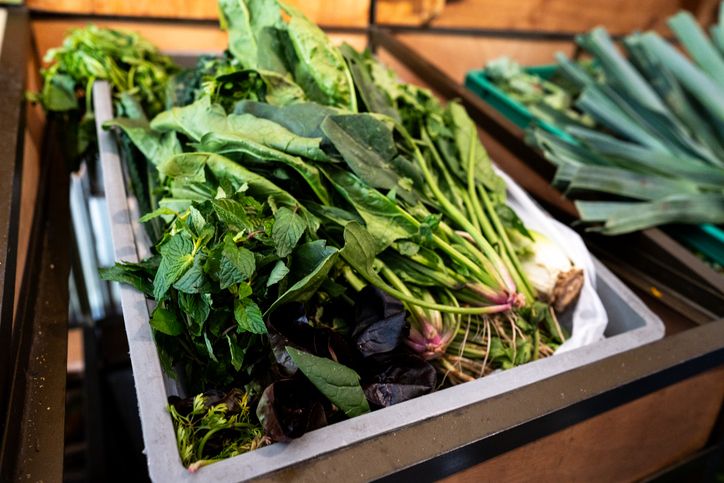
Importance of leafy greens in a healthy diet
Leafy greens like spinach, kale, and Swiss chard are some of the best vegetables for weight loss. They are very low in calories and high in nutrients. On average, they contain between 7 to 33 calories per 100 grams, making them ideal for eating in large portions without increasing your calorie intake.
These greens are also rich in fiber, which helps you feel full. They contain beneficial plant compounds that support digestion, blood sugar balance, and bone health. Their high nutrient content helps you lose weight without missing out on vitamins and minerals.
Including leafy greens in your meals can also help reduce your intake of high calorie foods like refined grains and fatty foods. This supports long-term weight management and helps promote weight loss in a healthy way.
How to use leafy greens in meals
Leafy greens are easy to add to both cooked and raw meals. Here are simple ways to include them in your routine:
• Raw spinach: use 2 to 3 cups in a smoothie for a low calorie, high fiber start to your day
• Sautéed kale: cook with garlic and olive oil for a quick side dish
• Kale chips: bake at 350°F with olive oil spray for 10 to 15 minutes until crispy
• Swiss chard in stir fry: chop the stems into small pieces and cook first, then add the leaves for the last 2 minutes
These greens mix well with other plant foods, lean protein, and healthy fats like olive oil. They help balance meals and lower calorie density while boosting overall health.

Bell Peppers for Weight Loss: Low Calorie and Rich in Vitamin C
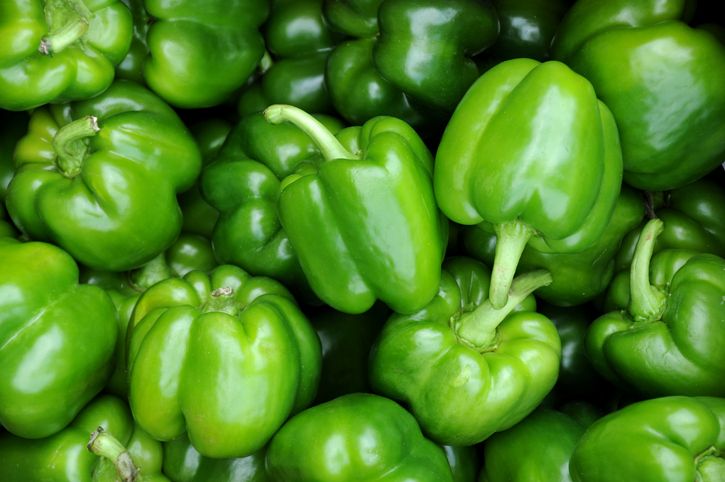
Importance of bell peppers for fat loss and energy balance
Bell peppers are colorful, low-calorie vegetables that support healthy weight loss. One cup of chopped bell pepper has about 30 calories and is packed with vitamin C. Red bell peppers contain over 150% of the recommended daily intake of vitamin C, which helps support your immune system and aids the body’s natural fat-burning processes.
They are also high in water and fiber, which helps you stay full and satisfied. Their natural sweetness makes them useful for reducing sugar cravings and replacing high calorie snacks or fruit juices. Eating more fruits and vegetables like bell peppers helps lower overall calorie intake while adding volume to meals.
Including bell peppers in your diet may also help reduce belly fat and improve blood sugar control, making them a smart choice for long-term weight management.
Simple ways to add bell peppers to your meals
Bell peppers are easy to use in many types of meals. Here are simple ways to include them:
• Snacks: slice into strips and eat raw with hummus or a little peanut butter
• Stuffed peppers: fill with lean protein and brown rice, then bake
• Omelets: chop and sauté before adding to eggs for extra fiber and flavor
• Salads and stir fries: dice and mix with other vegetables for a low calorie side
Bell peppers stay fresh in the fridge for about a week if stored in the crisper. Choose ones that are firm and heavy for their size. Their bright color and crisp texture make them one of the best vegetables for weight loss and everyday cooking.
Book Now to Experience
S6 Body Sculpting Treatment
1 Minute Self-Registration
Date should not be before minimal date

Brussels Sprouts for Weight Loss: Filling and Nutrient-Dense
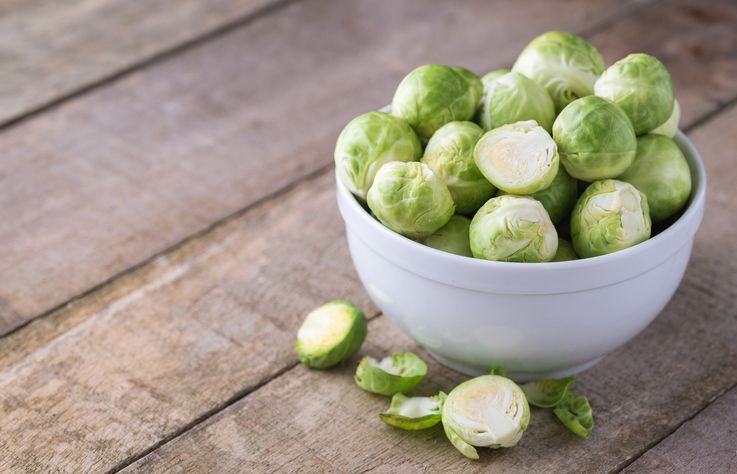
Importance of Brussels sprouts in a healthy diet
Brussels sprouts are a smart choice for healthy weight loss because they are low in calories and rich in essential nutrients. One cup of cooked Brussels sprouts provides about 38 calories and 4 grams of fiber. This helps control hunger and makes meals more satisfying without adding too many calories.
They are part of the cruciferous vegetable family, known for supporting gut health and improving how the body uses energy. Brussels sprouts also contain beneficial plant compounds and antioxidants that support blood sugar balance and overall health. This helps reduce the need for high calorie or fatty foods, making them a strong addition to your weight loss plan.
Their dense texture and mild flavor allow them to replace heavier sides like baked potato or sweet potatoes, while helping you stay full.
Simple ways to prepare Brussels sprouts
You can enjoy Brussels sprouts in different ways depending on your meal:
• Roast: slice in half, toss with olive oil, and bake at 400°F for 20 to 25 minutes
• Shred: use a knife or food processor and add raw to salads for crunch
• Sauté: cook with garlic and a splash of lemon juice for added taste
• Stir fry: mix with green beans or leafy greens and a lean protein for a balanced dish
Try to include Brussels sprouts in your meals two to three times a week. A serving of around one cup is enough to support your weight loss efforts without increasing your calorie intake.

Celery for Weight Loss: Light, Crunchy, and Satisfying
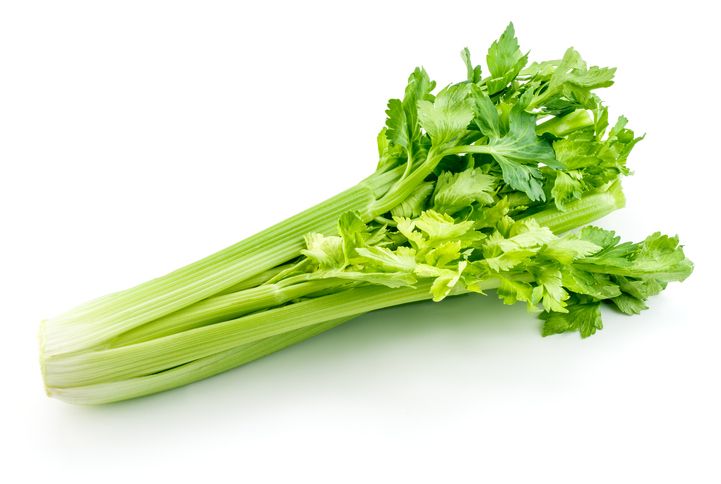
Importance of celery in a weight loss diet
Celery helps support weight loss by providing hydration, fiber, and volume without increasing your calorie intake. One large stalk contains around 10 calories and is made up mostly of water. While it's often referred to as a “negative-calorie food,” the term is misleading. Your body uses a small amount of energy to digest celery, but not more than what it provides.
What makes celery useful is its ability to help curb hunger. Its high water and fiber content helps you feel full between meals. This can reduce the need for processed snacks or foods high in added sugar and saturated fat. Celery also supports digestion and contains beneficial plant compounds that promote overall health.
It fits easily into a low calorie, high fiber diet that helps reduce belly fat, control blood sugar, and support long-term weight management.
Simple ways to include celery in meals
You can enjoy celery raw or cooked in a variety of meals:
• Snacks: slice and pair with a little peanut butter or hummus
• Smoothies: blend with raw spinach and whole fruits
• Salads: chop into small pieces and mix with leafy greens or green beans
• Soups and stir fries: add during cooking for extra crunch and fiber
Aim to eat two to three stalks per day. It’s a flexible ingredient that adds texture and bulk to meals without raising your overall calorie intake.
Book Now to Experience
S6 Body Sculpting Treatment
1 Minute Self-Registration
Date should not be before minimal date

Asparagus for Weight Loss: Helps Reduce Bloating and Supports Digestion
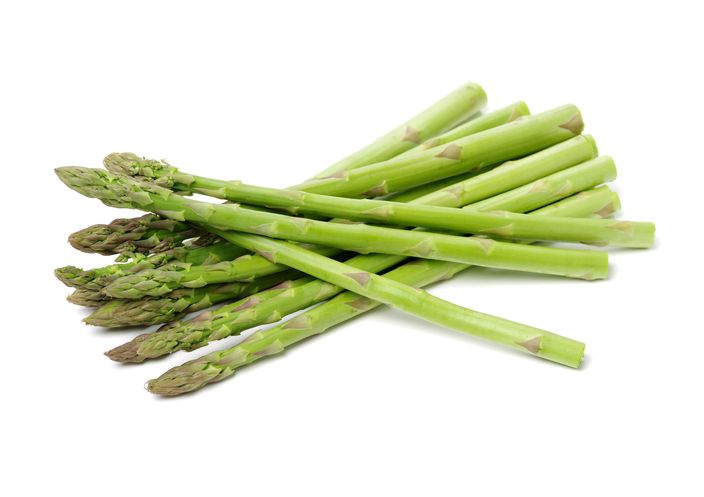
Importance of asparagus for weight management
Asparagus is a helpful vegetable for weight loss because it supports digestion and helps manage water balance in the body. One cup of cooked asparagus contains around 20 calories and provides about 3 grams of fiber. It is also a natural diuretic, which means it helps your body release extra water and reduce bloating. This can make you feel lighter and more comfortable, especially when following a healthy diet.
Asparagus contains essential nutrients such as folate, vitamin C, and vitamin K. These support your metabolism and overall health. Including asparagus in your meals may also help with blood sugar control, which is useful if you are trying to limit snacking or reduce belly fat.
Its fiber content supports a healthy gut and helps you stay full, making it easier to eat fewer calories without feeling deprived.
Easy ways to cook asparagus
Asparagus is quick to prepare and works in many types of meals:
• Steamed: cook for 5 to 7 minutes until tender, then add lemon and pepper
• Grilled: place on a hot grill for a few minutes per side for a smoky taste
• Sautéed: slice into short pieces and cook with garlic in olive oil
• Add to meals: mix into omelets, stir fries, or pasta dishes for extra fiber
Try eating asparagus two to three times a week as part of your regular meals. It helps support healthy weight loss without increasing your calorie intake.

Green Beans for Weight Loss: Nutrient-Rich and Low in Carbs
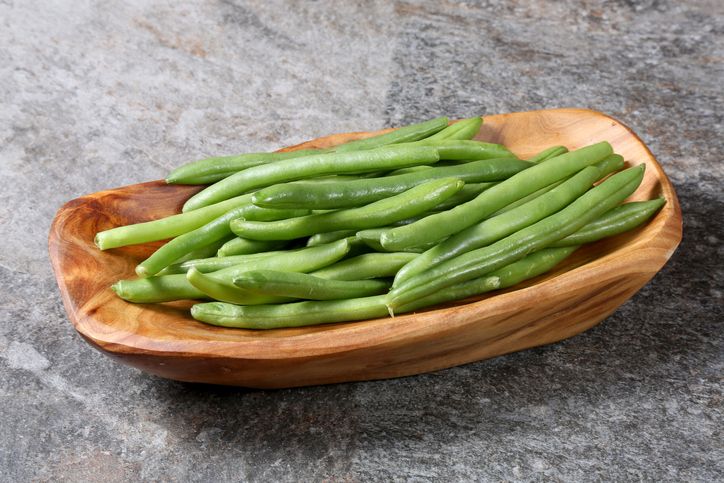
Importance of green beans in a healthy diet
Green beans are a useful choice for anyone looking to lose weight. They are low in calories, with about 31 calories per cup, and provide a mix of fiber, protein, and important vitamins. Each cup contains around 2.7 grams of fiber, which supports digestion and helps reduce hunger between meals.
Their low carbohydrate content makes green beans a good option for people managing their blood sugar or reducing refined grains. They also contain antioxidants like lutein and zeaxanthin, which support eye health, and minerals such as folate and manganese that play a role in metabolism and bone health.
Adding green beans to meals can help lower calorie intake, reduce the need for starchy vegetables, and support overall health without adding saturated fat or added sugar.
How to prepare and use green beans in meals
Green beans are easy to cook and fit into many dishes. Here are a few simple methods:
• Steamed: cook for 5 to 6 minutes and season with olive oil or garlic powder
• Roasted: place in the oven at 400°F with a light oil spray until crisp
• Sautéed: cook with lean protein and other non starchy vegetables in a stir fry
• Added to meals: mix into salads, soups, or serve as a side dish
Green beans help increase the fiber in your diet without raising calorie intake. They work well in most types of meals and are easy to store and prepare. Try adding them to your meals several times a week to support healthy weight loss and maintain a balanced, nutrient-rich diet.
Book Now to Experience
S6 Body Sculpting Treatment
1 Minute Self-Registration
Date should not be before minimal date

Smart Pairings That Support Weight Loss: What to Eat With Low-Calorie Vegetables
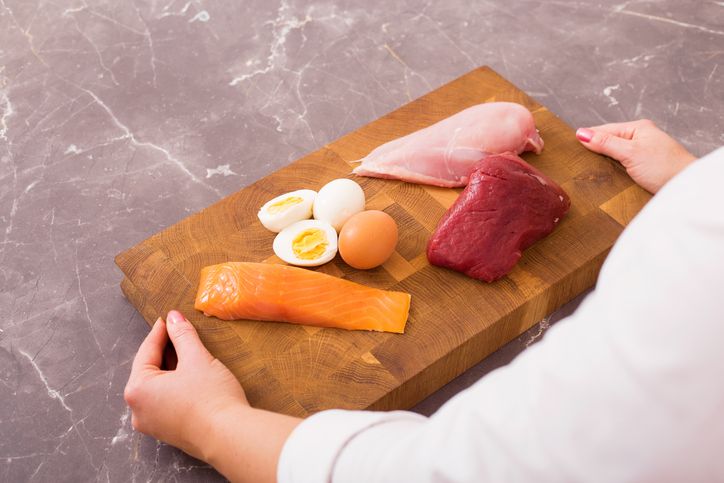
Importance of combining vegetables with balanced ingredients
While eating vegetables that are low in calories is a strong foundation for weight loss, pairing them with the right foods can improve results and help maintain energy, satiety, and overall health. Vegetables work best when combined with lean protein, healthy fats, and complex carbohydrates that keep your meals balanced and satisfying.
Pairing vegetables with other nutrient-rich plant foods also helps reduce the urge to snack on processed or high calorie options. This supports better blood sugar control and makes it easier to stay within your daily calorie goals.
Food combinations that promote healthy weight loss
To support weight loss without feeling deprived, build meals using these types of food pairings:
• Lean protein: Add chicken breast, tofu, lentils, or fish to meals with vegetables to increase fullness and support muscle maintenance. Protein requires more calories to digest and helps curb hunger for longer.
• Healthy fats: Use small amounts of olive oil, avocado, or a few nuts to increase satisfaction. These heart healthy fats help the body absorb fat-soluble vitamins found in leafy greens and bell peppers.
• High fiber grains: Include small servings of whole grains like brown rice, quinoa, or oats alongside your vegetables. These add texture, flavor, and more fiber to your plate, supporting digestion and blood sugar stability.
• Fermented foods: Add kimchi, plain Greek yogurt, or sauerkraut to boost gut health and digestion. A healthy gut can support more efficient weight loss and nutrient absorption.
• Whole fruits: Use fresh fruit like half a grapefruit or apple slices as part of your meal or snack. They add natural sweetness and reduce the need for sugary drinks or desserts.
Foods to reduce or replace
If your goal is to eat fewer calories and promote steady fat loss, consider replacing these foods with the options above:
• Swap refined grains for whole grains
• Replace fruit juices with whole fruits
• Limit fatty foods and added sugar
• Choose non starchy vegetables over starchy sides like baked potatoes or sweet potatoes

Common Mistakes to Avoid When Eating for Weight Loss

Importance of avoiding small habits that delay progress
Even with a diet rich in low-calorie vegetables, certain habits can slow weight loss or lead to frustration. Being mindful of what you eat alongside those vegetables—and how you prepare them—can make a major difference. The goal is to support healthy weight loss without accidentally increasing calorie intake or missing out on essential nutrients.
Mistakes that can affect your weight loss journey
Here are common habits that may interfere with your progress, even if you're eating healthy foods:
• Relying too much on added oils or sauces: Steamed broccoli or roasted cauliflower is a good choice—until it’s covered in butter or cheese. Use olive oil in small amounts and season with herbs, garlic powder, or nutritional yeast to keep calories low while adding flavor.
• Skipping protein: A meal of vegetables alone may leave you hungry soon after. Adding lean protein like grilled chicken, boiled eggs, or plain Greek yogurt helps your body stay full and burn more calories during digestion.
• Overeating “healthy” snacks: Hummus, nut butters, and dried fruits are nutritious, but they contain more calories than they appear. Pair raw vegetables with just a tablespoon of peanut butter or a few almonds to stay in control.
• Eating too few calories: Extreme calorie cuts can slow metabolism and lead to nutrient deficiencies. Combine vegetables with plant foods, lean protein, and high fiber grains to support energy levels and healthy fat loss.
• Drinking calories: Fruit juices, sweetened teas, and sugary smoothies can add hundreds of calories without reducing hunger. Choose water, herbal tea, or unsweetened drinks to keep your calorie intake low.
Staying consistent with your eating habits
Weight loss doesn’t mean eating only raw vegetables or avoiding all carbs. It means creating balanced meals, watching portion sizes, and avoiding ingredients that add more calories than you think. Small changes, like using whole fruits instead of juice or choosing brown rice over refined grains, support a healthy gut and help you manage your weight more easily.

Boost Fat Loss Results with S6 Body Sculpting Treatment
Support your healthy diet with targeted body shaping
Eating more low-calorie vegetables is one of the most effective ways to reduce your calorie intake and support healthy weight loss. High fiber foods like broccoli, leafy greens, and green beans help curb hunger and promote fullness, making it easier to eat fewer calories and avoid weight gain. But even with a healthy diet rich in plant foods, some areas of stubborn fat can be hard to reduce—especially around the belly, thighs, arms, and back.
This is where the S6 Body Sculpting Treatment can enhance your efforts. While vegetables help reduce overall body fat, this non-invasive treatment focuses on specific areas where the body tends to store fat, even during a calorie deficit. It complements your weight loss journey by improving visible results in parts that respond more slowly to diet alone.
How the treatment works
The S6 Body Sculpting Treatment uses a patented low-energy bio-laser to target subcutaneous fat. This laser gently heats the fat layer, prompting fat cells to release stored fatty acids. At the same time, vacuum suction technology stimulates lymphatic drainage to help your body remove the fat more efficiently. The treatment also boosts collagen production, helping to firm the skin while fat is reduced.
This method targets seven common problem areas—belly, waist, thighs, arms, buttocks, calves, and back—without surgery, injections, or downtime. It’s a safe, non-surgical way to speed up fat loss and improve body contours without affecting your overall health or interfering with your daily routine.
Why combine S6 with a healthy diet
• Vegetables reduce calorie intake; S6 shapes targeted areas
• Supports belly fat reduction where diet alone may fall short
• Enhances results without needing extreme exercise or restrictive eating
• Firms skin, which can lose elasticity during weight loss
• Non-invasive and suitable for most body types
By combining a balanced diet full of non starchy vegetables, lean protein, and healthy fats with targeted treatments like S6, you can promote weight loss while improving your body’s shape and tone. It’s a practical approach for anyone looking for real, lasting results.
Book your appointment now to see how S6 can help you lose fat and enhance the effects of your healthy lifestyle.
New Beauty's S6 Body Sculpting TreatmentBook Now to Experience
S6 Body Sculpting Treatment
1 Minute Self-Registration
Date should not be before minimal date
FAQ
1. Can I lose belly fat by eating only low-calorie vegetables?
Eating more low-calorie vegetables can support weight loss and help reduce belly fat over time, especially when combined with a calorie deficit. However, focusing only on vegetables may not provide enough protein or healthy fats your body needs. For healthy weight loss and to support your metabolism, it’s best to pair vegetables with lean protein, heart healthy fats like olive oil, and whole grains. Spot reduction is not possible through diet alone, but a balanced approach can reduce overall body fat, including belly fat.
2. How many calories should I eat daily to promote weight loss?
The number of calories needed to promote weight loss depends on your age, gender, activity level, and current weight. In general, most adults can lose weight by reducing their daily intake by 500 to 750 calories. This often brings calorie intake down to 1,200–1,500 calories per day for women and 1,500–1,800 for men. Choosing foods that are low in calories and high in fiber—like raw vegetables, leafy greens, and cruciferous vegetables—helps you stay within your calorie goals without feeling hungry.
3. Are fruit juices a good choice for weight loss?
Fruit juices are often high in natural sugars and provide more calories than whole fruits. They also lack the fiber found in whole fruits, which helps slow digestion and curb hunger. For better weight management, it’s best to eat whole fruits like half a grapefruit, apples, or berries rather than drinking fruit juices. These support a healthy gut and reduce the chance of sudden spikes in blood sugar, which can lead to cravings and overeating.
4. How soon can I see results from combining diet and body contouring treatments?
Results vary depending on your overall lifestyle, diet, and the number of treatment sessions. Most people begin to notice visible changes after several sessions of treatments like S6 Body Sculpting, especially when paired with a healthy diet that includes high fiber foods and non starchy vegetables. For best results, follow a consistent eating routine, stay active, and attend all recommended treatment sessions.
5. Can eating too few calories slow down my metabolism?
Yes. Eating too few calories for an extended period can cause your body to conserve energy by slowing your metabolic rate. This can make it harder to lose weight over time and may also lead to fatigue, muscle loss, and nutrient deficiencies. To support healthy weight loss, focus on nutrient-dense foods like vegetables, lean protein, and plant foods. Avoid drastic calorie cuts and consider guidance from a registered dietitian or healthcare professional to set a safe and realistic calorie target.
Recommended Articles
COPYRIGHT© NEW BEAUTY MANAGEMENT LIMITED 2025. ALL RIGHT RESERVED.

